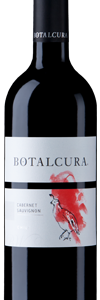The grapes for KAI 2010 were selected from blocks of Max vineyard in the Aconcagua Valley, a region with a Mediterranean climate that includes a long, dry growing season, rainfall concentrated in winter, and moderately warm summer days cooled by soft evening breezes blowing in from the close Pacific Ocean. The Errázuriz Kai Carménère comes from grapes of Carménère vines vertically-trained which were planted in 1992 and 1993 in deep loamy alluvial and riverbed soils with 30 to 50% stone content. Average yields here range from 1.5 to 2 kg per plant, which enables good fruit set and vigour control, resulting in wines with outstanding concentration, colour, and volume. The grapes were harvested quite late in the season to ensure the flavours deliver good fruit expression without herbaceous notes. The high daytime–night time temperature variation (averaging 19°C/34°F) in the weeks leading up to the harvest triggers high concentrations of anthocyanins, which intensify the colour of the wines.
Harvest was performed the first and second week of May, 2010. The average temperature (October–April) was of 18.9°C / 66°F – and the temperature oscillation (October–April) was of 18.5°C / 33.3ºF. Annual precipitation reached 250 mm / 9.8 in. Spring began in September, with average temperatures 9.6% lower than in the preceding year. With the exception of October and December, the rest of the season displayed lower than average temperatures as well. In regard to phenological development, budbreak occurred 18 days later than in the previous season. November was colder, which affected flowering and therefore reduced the final yields. Harvest began 10 days later than last year, probably due to below-normal average temperatures from January to April. There was 1,551 degree days this season, 118 less than in the previous season and 4.6% lower than the historic average. The most notable feature of this season was the very slow, even and steady ripening of the grapes, aided by rather moderate temperatures in March. The grapes were in excellent condition at harvest time, leading to wines with fresh red and black fruit, very good expression and concentration, and good acidity.








